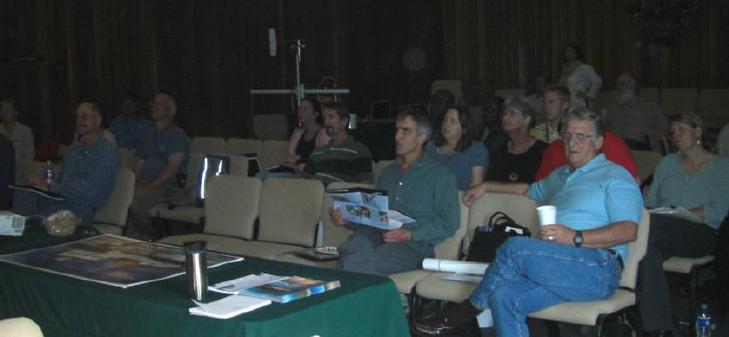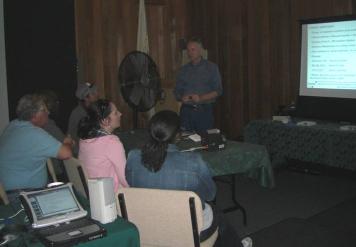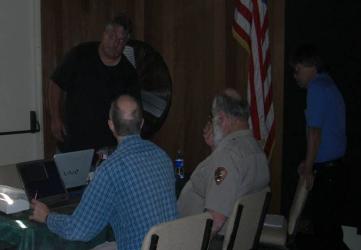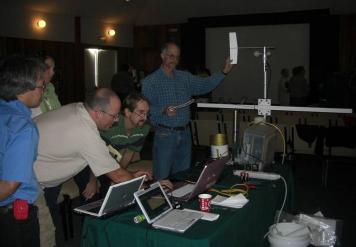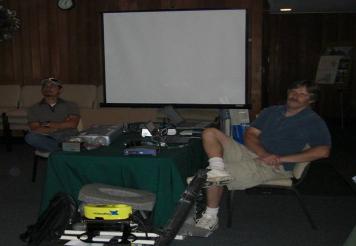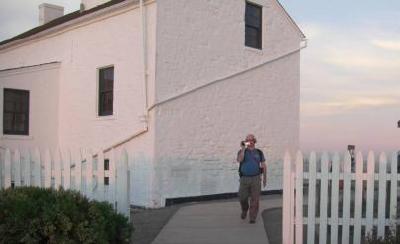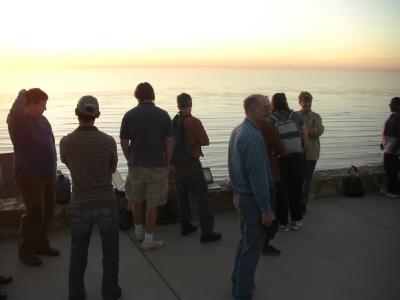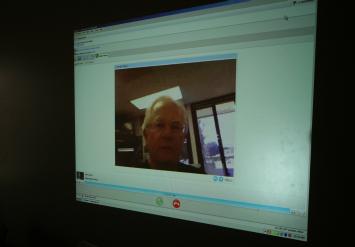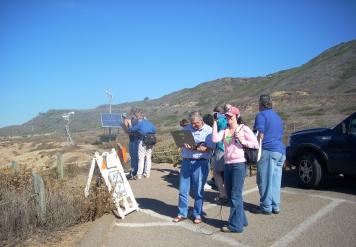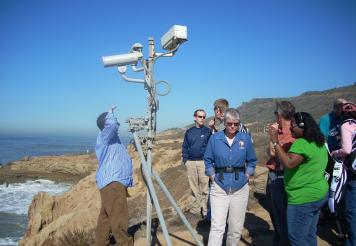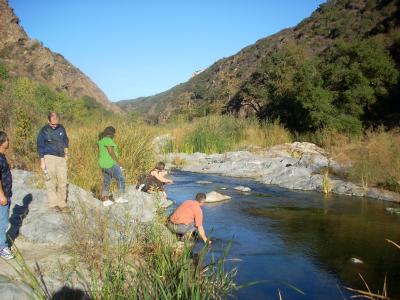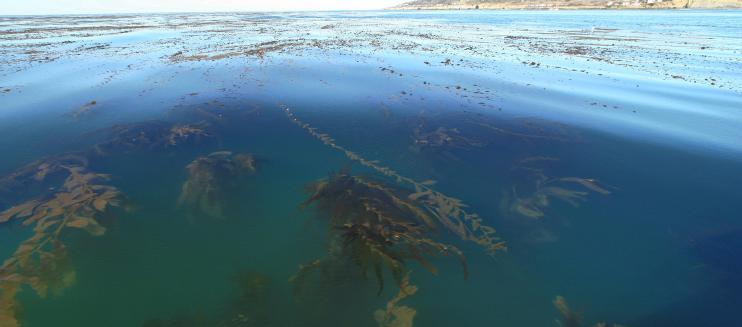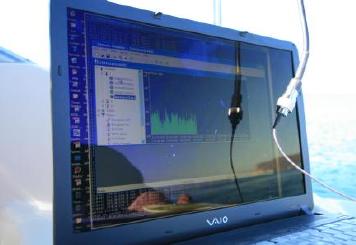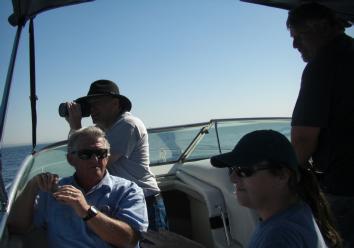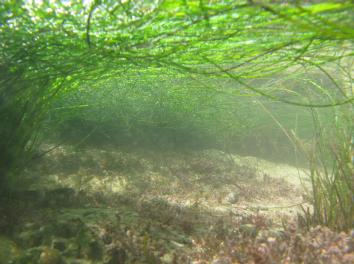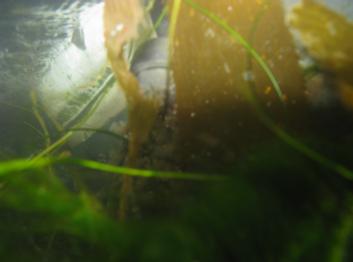
|
|
|
|
November 22, 2008
Technology Transfer Workshop for National Park Service staff and educators led by HPWREN and SDSU Field Stations Program staff By Susan Teel, National Park Service, Director, California Mediterranean Research Learning Center
HPWREN and SDSU Field Stations Program led a two-day Technology Transfer Workshop and Live Interactive Virtual Exploration (LIVE) backpack system training for National Park Service staff and educators. Participants learned the basics of how to plan and install a wireless system which supports LIVE distance education programs and environmental sensors. The goal of the workshop and training session was to cultivate expertise with wireless systems and LIVE distance education programs in the National Park Service. Workshop participants gained an understanding of wireless data systems sufficient to plan and implement a system at their parks. NPS staff practiced their skills will now form regional teams to assist each other in planning and installing systems which meet the needs of their parks. Copies of workshop materials are available at /20081113_NPS-TT-Workshop. Hans-Werner Braun provided an overview of HPWREN and general network systems, Susan Teel reviewed the history of the Cabrillo National Monument wireless system and LIVE backpack project, Pablo Bryant reviewed San Diego State University Field Stations Program activities, provided more details about environmental sensors, and shared examples from Santa Margarita Ecological Reserve. Mike Maki, National Park Service, discussed Department of Interior (DOI) rules associated with wireless networking and video conferences.
The first day of the workshop culminated at the Cabrillo National Monument lighthouse, where attendees assisted the instruction team in building a complete system at a remote location which included a point-to-point wireless link for Internet access, a local access point, environmental sensors, a camera, and a LIVE backpack. The second day of the workshop began with an informal review and question and answer session led by Hans-Werner, Jim, and Mike. National Park Service staff discussed ideas for their park and peppered the instructors with questions. Kimberly Mann Bruch led the Sea to Shining Sea LIVE backpack session with assistance from Jim Hale, Mike Maki, Cruz Jimenez, and Ulysses Huerta who assisted groups with setting up and testing the LIVE backpacks. Nine teams assembled and tested the backpacks, and used Skype to communicate with science teacher Roger Wynn from Mountain Empire Schools. In short time, the teams took the backpacks to the rocky intertidal area and initiated LIVE programs. Jim Hale provided troubleshooting assistance at the tidepools.
The workshop was topped off Friday afternoon with a field trip to San Diego State University's Santa Margarita Ecological Reserve (SMER). This 4,600 acre research reserve served as an example for NPS staff to visualize a multitude of environmental sensors in a remote setting similar to parks. NPS Rangers and Educators toured SMER with Pablo Bryant, who discussed the SMER network, how it is connected to HPWREN and details related to the various sensor stations. Due to Department of Interior (DOI) restrictions on video conferencing and streaming video, we are hopeful that workshop participants will form collaborative partnerships with universities, educational organizations, and schools similarly to the NPS-HPWREN collaborative model which enables wireless connectivity and LIVE programming.
The workshop was a success, and several parks are already moving forward to plan systems to support LIVE programs, environmental sensors, and remotely located cameras. |
